Key Takeaways
- Learn how to assess your strengths, values, and interests to align with the right career direction in 2025.
- Discover proven strategies to explore career options, set SMART goals, and build in-demand skills.
- Gain insights into networking, mentorship, and avoiding common career planning mistakes for long-term success.
In an era defined by rapid technological advancement, economic uncertainty, and evolving workplace dynamics, finding the right career path in 2025 has never been more crucial—or more complex.
The traditional linear career journey, where individuals stay in one field or company for decades, is no longer the norm.
Today’s professionals are navigating a job market that demands agility, continuous learning, and the ability to align personal aspirations with ever-changing industry trends.
Whether you’re a recent graduate standing at the crossroads of opportunity, a mid-career professional contemplating a pivot, or someone simply searching for more purpose and direction in your work life, identifying the career path that best fits your personality, skills, and goals is a vital step toward long-term success and satisfaction.

The global workforce is undergoing a fundamental transformation, influenced by the rise of automation, artificial intelligence, and remote work.
New roles are emerging in areas like sustainability, data science, cybersecurity, and digital marketing, while others are being redefined to meet the demands of a fast-paced digital economy.
At the same time, employers are placing greater emphasis on emotional intelligence, adaptability, and lifelong learning.
As such, individuals must not only understand their own strengths and interests but also develop a strategic approach to career planning that reflects both self-awareness and market realities.
This comprehensive, step-by-step guide has been designed specifically for 2025, taking into account the latest workforce trends, high-demand industries, and future-ready skills.
It will walk you through a structured process to discover your ideal career path—from conducting a deep self-assessment and exploring in-demand opportunities to setting SMART goals and building the skills that will help you stand out in a competitive job market.
Each step is supported by practical tools, insightful examples, and actionable advice that will empower you to make informed decisions about your professional future.
Moreover, this guide goes beyond simply helping you pick a job title.
It encourages a mindset shift—from passively drifting through the job market to proactively designing a career that aligns with your values, lifestyle aspirations, and long-term vision.
It’s not just about landing a job in 2025—it’s about creating a career trajectory that fuels growth, enhances fulfillment, and adapts with you over time.
So whether you’re starting from scratch or recalibrating your path, this in-depth guide will serve as a reliable roadmap. By the end, you’ll not only have greater clarity about the direction that suits you best, but also the confidence to take decisive steps toward building a future-ready and personally rewarding career. Let’s begin the journey to discovering your ideal career path in 2025.
Why Finding the Right Career Path Matters in 2025
As the job market continues to evolve at a record pace, finding the right career path in 2025 is more critical than ever before. With the integration of emerging technologies, changing workforce expectations, and a shift toward skills-based hiring, the decisions individuals make today will significantly influence their future job satisfaction, income potential, and career resilience. Below are key reasons why identifying the ideal career path is essential in the modern world of work.
Shifting Industry Demands and Emerging Roles
- The rise of AI and automation is transforming job roles across nearly every industry.
- Routine and repetitive tasks are increasingly handled by machines, pushing demand for creative, analytical, and tech-savvy roles.
- Example: Traditional bookkeeping roles are declining, while demand for data analysts and financial technology specialists is rising.
- High-growth industries are creating new career opportunities.
- Sectors such as green energy, healthcare, cybersecurity, cloud computing, and digital marketing are expanding rapidly.
- Example: The growth of electric vehicle (EV) technology is fueling careers in battery engineering and sustainable manufacturing.
- Choosing a path in a growing industry enhances long-term employability.
- Aligning with sectors projected to expand reduces the risk of job obsolescence.
Career Satisfaction and Personal Fulfillment
- A well-matched career leads to higher levels of motivation and happiness.
- When individuals work in roles aligned with their strengths and interests, they experience greater daily satisfaction.
- Finding the right career can reduce mental fatigue and burnout.
- Mismatched jobs often lead to chronic stress, low engagement, and poor performance.
- Work-life integration is easier with a career aligned to your values.
- People who value flexibility may find remote or freelance careers more suitable.
- Example: Someone with a passion for creativity and independence may thrive as a UX designer or digital content creator.
Optimizing Income Potential and Financial Security
- Certain career paths offer significantly higher earning potential.
- Technology, healthcare, and engineering roles tend to pay above-average salaries.
- Example: Software developers and AI engineers can command six-figure salaries with the right skills and experience.
- Early career planning helps you invest in the right education and certifications.
- Choosing a career path in advance allows individuals to pursue degrees or credentials that yield high ROI (return on investment).
- Example: A person targeting a career in cybersecurity may pursue certifications like CompTIA Security+, CISSP, or CEH to boost employability and salary.
- Avoiding costly career pivots and student debt.
- By choosing the right path early, individuals can avoid pursuing degrees or jobs that don’t lead to long-term success.
Adaptability in a Dynamic Workforce
- The modern job market is no longer static; adaptability is a must.
- Careers today often involve multiple roles, industries, or even self-employment over time.
- Example: A digital marketer might evolve into a marketing automation specialist or a product growth strategist.
- A clear career path allows for better planning and upskilling.
- When individuals know their goals, they can proactively acquire the skills needed to remain relevant.
- Understanding career pathways helps individuals embrace lateral or vertical moves.
- Not all progress is linear; some career changes may involve lateral shifts that lead to higher satisfaction or strategic growth later.
Enhancing Professional Brand and Competitive Edge
- Clarity in your career direction improves personal branding.
- Candidates who understand their career path can build targeted resumes, portfolios, and online profiles.
- Example: A person focused on digital strategy can build a LinkedIn profile and blog that showcases their expertise in SEO, content marketing, and analytics.
- Strategic career decisions help you stand out in a crowded job market.
- With millions of job seekers competing globally, specialization and clarity give candidates a competitive advantage.
- A targeted career trajectory attracts better job opportunities.
- Recruiters and employers are more likely to hire candidates with a clear and consistent professional narrative.
Navigating Global and Remote Job Markets
- Remote and global work options have broadened career possibilities.
- Finding the right career path allows individuals to explore international markets and remote-friendly roles.
- Example: A software developer in the Philippines may work remotely for a startup in Europe, enjoying both global exposure and flexibility.
- The global job market demands cultural competence and digital literacy.
- Choosing a career path aligned with global trends (e.g., cross-border e-commerce, virtual collaboration, multilingual support) boosts long-term career value.
- Professionals with a clear direction can tap into remote upskilling and networking opportunities.
- Online courses, virtual conferences, and remote internships are widely accessible to those pursuing a focused goal.
Future-Proofing Your Career
- Future-ready careers require forward-thinking decisions today.
- Planning for the future ensures your skills and experience remain relevant in a tech-driven economy.
- A strategic path helps in anticipating and adapting to industry changes.
- Individuals with a clear trajectory are more likely to foresee industry disruptions and respond effectively.
- Investing in long-term career growth now prevents stagnation later.
- With career trajectories increasingly nonlinear, strategic planning helps avoid career plateaus and supports continuous development.
By understanding why choosing the right career path matters—especially in the context of the 2025 job landscape—individuals can make smarter decisions that lead to personal satisfaction, professional growth, and long-term success. The right career path is not just a destination; it’s a dynamic journey that aligns your unique potential with a future full of possibilities.
Before we venture further into this article, we would like to share who we are and what we do.
About 9cv9
9cv9 is a business tech startup based in Singapore and Asia, with a strong presence all over the world.
With over nine years of startup and business experience, and being highly involved in connecting with thousands of companies and startups, the 9cv9 team has listed some important learning points in this overview of Discover Your Ideal Career Path: A Step-by-Step Guide for 2025.
If your company needs recruitment and headhunting services to hire top-quality employees, you can use 9cv9 headhunting and recruitment services to hire top talents and candidates. Find out more here, or send over an email to [email protected].
Or just post 1 free job posting here at 9cv9 Hiring Portal in under 10 minutes.
Discover Your Ideal Career Path: A Step-by-Step Guide for 2025
- Self-Assessment – Know Yourself First
- Explore Career Options Based on Your Profile
- Set SMART Career Goals
- Gain Experience and Build Skills
- Network and Seek Mentorship
- Make Informed Career Decisions
- Take Action and Monitor Your Progress
- Common Career Planning Mistakes to Avoid
1. Self-Assessment – Know Yourself First
The journey to discovering your ideal career path in 2025 begins with one essential principle: self-awareness. Before you explore industries, apply to jobs, or pursue certifications, it’s crucial to take a deep dive into who you are—your strengths, passions, values, personality traits, and natural inclinations. Self-assessment is not just a reflective exercise; it is a strategic foundation for making informed, fulfilling, and future-proof career decisions. Knowing yourself first helps align your personal identity with professional aspirations, increasing the likelihood of long-term satisfaction and success.
Identify Your Core Strengths and Skills
- Understanding your core competencies can help target the right roles.
- Are you a natural communicator, problem-solver, or analytical thinker? These strengths shape the kinds of tasks you’ll thrive in.
- Use skill assessments and feedback to identify areas of excellence.
- Examples: Try platforms like CliftonStrengths, Skills Matcher (CareerOneStop), or a SWOT analysis (Strengths, Weaknesses, Opportunities, Threats).
- Distinguish between hard skills and soft skills.
- Hard skills include data analysis, coding, or graphic design.
- Soft skills include leadership, empathy, time management, and adaptability.
- Example:
- If you’re detail-oriented and good with numbers, a career in data analysis, accounting, or financial planning might be a good fit.
Evaluate Your Interests and Passions
- Reflect on what tasks or topics naturally engage your curiosity.
- What types of books, news, or content do you consume in your free time?
- Think about your hobbies or side projects.
- Sometimes, your extracurricular passions can indicate a fulfilling career direction.
- Example: A person who enjoys building websites for fun may find satisfaction in a career in front-end development or UI/UX design.
- Use career interest assessments to gain clarity.
- Tools like the Strong Interest Inventory or Holland Code (RIASEC) can help align your interests with suitable career paths.
Understand Your Personality Type and Work Style
- Personality assessments offer insights into ideal work environments and collaboration styles.
- Popular tools include the Myers-Briggs Type Indicator (MBTI), DISC profile, and the Big Five Personality Traits.
- Introverts vs. extroverts may prefer different roles.
- Introverts might excel in roles like writing, data research, or software development.
- Extroverts may thrive in sales, marketing, or event management.
- Work style preferences impact career satisfaction.
- Do you prefer independent tasks or team-based collaboration?
- Do you like structured environments or flexible, dynamic settings?
- Example:
- An ISTJ personality type (logical, organized) may prefer structured roles like logistics manager, operations analyst, or accountant.
Clarify Your Personal and Professional Values
- Career alignment with personal values drives long-term motivation.
- Values include autonomy, security, creativity, service, innovation, and environmental impact.
- Ask yourself key questions:
- Do I want to make a social impact through my work?
- Is job stability or creative freedom more important to me?
- Use value clarification exercises or lists to prioritize.
- Tools like the Life Values Inventory or MindTools Values Assessment can help.
- Example:
- If you highly value sustainability, you may consider roles in environmental policy, renewable energy, or green tech startups.
Consider Your Lifestyle and Long-Term Goals
- Determine what lifestyle you want your career to support.
- Are you seeking work-life balance, high earnings, or frequent travel?
- Factor in location preferences and flexibility.
- Do you want a remote job or are you open to relocation?
- Do you prefer a traditional 9-to-5 schedule or freelance autonomy?
- Account for future personal goals.
- Consider how your career will align with plans for family, entrepreneurship, or lifelong learning.
- Example:
- If you aspire to travel frequently, a career in remote digital marketing or international consulting could match your lifestyle goals.
Analyze Past Experiences and Feedback
- Look for patterns in your academic, internship, or job history.
- What roles or tasks energized you? Which ones drained you?
- Reflect on feedback from colleagues, mentors, or performance reviews.
- Others’ perspectives can help highlight strengths or blind spots.
- Revisit achievements and failures.
- What accomplishments are you most proud of? What setbacks taught you valuable lessons?
- Example:
- If multiple supervisors have praised your leadership skills, exploring roles in team management, operations, or human resources may be worthwhile.
Leverage Career Self-Assessment Tools
- Use data-backed tools to explore compatible career paths.
- CareerExplorer, Truity, 16Personalities, and MAPP Career Assessment provide in-depth reports and job suggestions.
- Consider combining multiple tools for more accurate insights.
- Cross-reference findings to identify recurring patterns in strengths, interests, and personality traits.
- Document and review your results.
- Keep a digital or physical career journal to track insights and align them with emerging opportunities.
Create a Personal Career Profile Summary
- Synthesize your self-assessment into a concise summary.
- Include your top skills, interests, values, personality traits, and ideal work conditions.
- Use this summary to evaluate job descriptions and career options.
- This reference point will help filter opportunities that don’t align with your identity and goals.
- Example Template:
- “I am a detail-oriented and analytical professional with a passion for technology and sustainability. I thrive in independent, data-driven roles and value autonomy, innovation, and work-life balance.”
Self-assessment is not a one-time task, but an ongoing process of discovery and refinement. By thoroughly understanding who you are and what you want, you lay a strong foundation for every subsequent step in your career journey. In the evolving job landscape of 2025, clarity about your inner drivers gives you a distinct edge—helping you choose not just a job, but a career that energizes, sustains, and grows with you.
2. Explore Career Options Based on Your Profile
Once you have a clear understanding of your skills, values, interests, and personality from self-assessment, the next step in discovering your ideal career path in 2025 is to explore potential career options that align with your profile. This stage transforms self-knowledge into actionable insights by identifying roles, industries, and paths that are both personally fulfilling and professionally viable. With rapid industry evolution and emerging technologies shaping the future of work, this exploration phase is more critical than ever.
Match Your Skills to Industry Demands
- Identify careers that capitalize on your top skills.
- If you’re tech-savvy with strong analytical skills, consider data science, software engineering, or cybersecurity.
- Strong interpersonal and communication skills may be ideal for careers in sales, public relations, or human resources.
- Use job-matching tools for skill-based recommendations.
- Explore platforms like LinkedIn Career Explorer, O*NET Online, and Coursera Career Academy.
- Explore transferable skills for career transitions.
- Example: A teacher with excellent presentation, planning, and interpersonal skills could transition into corporate training, instructional design, or customer success roles.
- Focus on emerging skill sets in 2025.
- Examples: AI literacy, data analytics, cloud computing, emotional intelligence, and green technology implementation are in high demand.
Filter Careers by Core Interests and Passions
- Align your daily job activities with your genuine interests.
- Love writing? Consider journalism, content strategy, or UX writing.
- Passionate about wellness? Explore careers in health coaching, fitness training, or occupational therapy.
- Evaluate how your interests fit into broader industries.
- Example: An interest in gaming could lead to careers in game development, esports marketing, or virtual reality design.
- Research niche sectors that match your passions.
- Platforms like MyNextMove and CareerExplorer provide passion-driven job suggestions.
Narrow Down Options Based on Work Style and Personality
- Identify roles that fit your preferred working style.
- Independent thinkers may excel in freelance, remote, or research-oriented roles.
- Collaborative personalities may prefer team-based roles like project management or product development.
- Match your personality traits to career environments.
- Introverted personalities may enjoy solitary or creative roles like graphic design or writing.
- Extroverted types might thrive in client-facing roles such as event planning, sales, or consulting.
- Example:
- A creative ENFP personality type may thrive as a brand strategist, marketing specialist, or innovation consultant.
Explore Careers That Align With Your Core Values
- Determine what kind of impact you want to make.
- If you value social justice, explore nonprofit management, social work, or public policy.
- If financial security is a top value, consider careers in banking, IT security, or law.
- Look into value-driven companies or sectors.
- Example: If you prioritize sustainability, research roles in clean energy, circular economy consulting, or environmental law.
- Use job databases with value-based search filters.
- Websites like Idealist.org (for social impact) and B Work (for B Corps) can help identify aligned opportunities.
Use Career Pathway Tools and Industry Research
- Leverage career mapping platforms.
- Tools like Roadtrip Nation, Indeed Career Guide, and Google Career Certificates provide structured overviews of career paths.
- Explore industry growth trends for 2025 and beyond.
- High-growth industries: AI & machine learning, renewable energy, biotechnology, cybersecurity, and digital marketing.
- Research job outlook and salary potential.
- Use sources like the U.S. Bureau of Labor Statistics (BLS) or Glassdoor to understand which roles offer long-term viability and financial rewards.
- Example:
- A career in UX/UI design is not only creative and user-focused but also projected to grow rapidly due to increasing digital demand.
Explore Job Titles and Real-World Examples
- Create a list of 10–15 career titles that match your profile.
- Use filters like industry, function, education level, and remote/flexibility preferences.
- Read real job descriptions and postings.
- Platforms like LinkedIn Jobs, Indeed, and Remote OK help you see the qualifications, responsibilities, and company expectations.
- Check employee reviews and career insights.
- Use Glassdoor, CareerBliss, and Reddit forums to gain authentic insights from people working in the field.
- Example:
- After identifying a passion for storytelling and social impact, one might explore roles like nonprofit communications manager, content creator for NGOs, or grant writer.
Seek Mentorship and Career Conversations
- Reach out to professionals in your fields of interest.
- Conduct informational interviews to gain firsthand insights on daily tasks, challenges, and opportunities.
- Join career-specific networking groups or online communities.
- Examples: Slack groups for digital nomads, LinkedIn groups for UX designers, or Reddit forums like r/careerguidance.
- Leverage alumni networks and career fairs.
- University career services and alumni events can connect you with experienced professionals in various industries.
- Example:
- Speaking with a current business analyst might reveal whether it aligns with your strengths in data and problem-solving.
Test Career Options Through Short-Term Experiences
- Experiment with internships, part-time jobs, or freelancing.
- These opportunities help validate your career assumptions and gain practical exposure.
- Take on volunteer roles or side projects.
- Example: Interested in digital marketing? Volunteer to manage social media for a local nonprofit to test your interest and capabilities.
- Participate in online challenges, hackathons, or bootcamps.
- Great for exploring careers like software development, design, or data science.
- Use job shadowing or job simulation platforms.
- Tools like Forage and Job Shadowing.com allow users to virtually experience a day in the life of specific roles.
Create a Career Shortlist Based on Alignment
- Review all career options and score them against your self-assessment profile.
- Rank based on criteria such as interest level, growth potential, value alignment, and work-life balance.
- Narrow down to 3–5 top career paths for deeper exploration.
- These should offer both personal satisfaction and external opportunity.
- Example:
- A person interested in mental health, psychology, and education might shortlist careers like school counselor, educational psychologist, and mental health advocate.
Exploring career options based on your personal profile ensures that your choices are intentional, realistic, and tailored for long-term fulfillment. In the dynamic career landscape of 2025, it’s no longer about following conventional paths—it’s about finding a unique fit that empowers both professional success and personal well-being. By strategically mapping your skills, interests, values, and work style to real-world opportunities, you create a future-ready career plan that evolves with you.
3. Set SMART Career Goals
Once you’ve explored potential career paths that align with your profile, the next vital step is to establish clearly defined goals. In 2025’s competitive job landscape, simply having aspirations is not enough — those aspirations need structure, clarity, and timelines. The SMART goal-setting framework is a proven method that empowers individuals to transform vague ambitions into concrete, achievable career objectives.
SMART stands for Specific, Measurable, Achievable, Relevant, and Time-bound. These five criteria ensure your goals are realistic, trackable, and aligned with your long-term career vision.
Why SMART Goals Are Essential for Career Development
- They provide direction and clarity.
- Avoids wandering aimlessly in the job market.
- Helps prioritize tasks that align with your professional growth.
- They allow for accurate tracking of progress.
- Easily measure accomplishments over time.
- Keep motivation levels high through small wins.
- They encourage accountability and commitment.
- Goals feel more tangible and structured.
- You’re more likely to follow through on steps required.
- Example:
- Instead of saying, “I want to become a project manager,” a SMART goal would be: “I will complete a PMP certification course within the next 6 months to qualify for a project management position in the IT sector by the end of the year.”
Specific: Define Clear and Precise Career Objectives
- Avoid vague or generic statements.
- Unspecific: “I want a better job.”
- Specific: “I want to transition into a digital marketing manager role in the healthcare industry.”
- Include role title, industry, or skillset.
- Example: “I aim to become a frontend developer specializing in React and TypeScript.”
- Clarify the ‘what,’ ‘why,’ and ‘how’ behind your goal.
- What: Desired job title or position.
- Why: Personal or professional motivation behind the goal.
- How: Action steps or resources required to achieve it.
Measurable: Set Quantifiable Indicators of Success
- Establish clear metrics or milestones.
- Examples: “Apply to 10 jobs per week,” “Complete 5 professional certifications,” or “Gain 1 year of relevant experience.”
- Track learning or achievements over time.
- Use tools like Trello, Notion, or Google Sheets to track applications, course completions, or networking activities.
- Measure progress in skill development.
- Example: “Improve my public speaking by participating in 3 Toastmasters sessions monthly.”
- Helps answer: How will I know I’ve achieved my goal?
Achievable: Set Realistic Goals Within Your Reach
- Align with your current skillset and resources.
- If you’re a beginner in coding, a goal to “become a full-stack developer in 2 months” might not be practical.
- A more achievable version: “Complete a beginner full-stack development bootcamp within 6 months.”
- Consider time, financial, and personal limitations.
- Work around other commitments such as full-time jobs, family responsibilities, or budget constraints.
- Break larger goals into smaller steps.
- Example:
- Goal: “Become a UX Designer.”
- Steps:
- “Complete an online UX/UI design course within 3 months.”
- “Design 3 portfolio projects by the end of the 4th month.”
- “Start applying to junior UX designer roles in month 5.”
- Example:
Relevant: Ensure Alignment With Your Long-Term Vision
- Confirm that the goal matches your broader aspirations.
- If your long-term goal is to work in sustainability, setting short-term goals to enter the oil & gas sector may not align.
- Verify alignment with your values, interests, and strengths.
- Example: If you value creativity and flexibility, pursuing a career in graphic design or digital content creation may be more fulfilling than roles in rigid corporate structures.
- Ask yourself:
- Will this goal move me closer to where I want to be in 5 or 10 years?
- Does this goal support my ideal lifestyle and personal priorities?
Time-Bound: Attach Deadlines to Create Urgency and Focus
- Set clear start and end dates.
- Vague: “Someday I’ll learn data analysis.”
- Time-bound: “I will complete a beginner-level data analysis course on Coursera within 8 weeks.”
- Use short-term and long-term timelines.
- Short-term goal: “Update my resume and LinkedIn within the next 7 days.”
- Mid-term goal: “Secure 3 interviews in the next 2 months.”
- Long-term goal: “Land a full-time data analyst role by December 2025.”
- Helps prioritize tasks and avoid procrastination.
How to Draft a SMART Career Goal in 2025
- Start with your ideal career outcome.
- Example: “Become a cloud solutions architect.”
- Add SMART components:
- Specific: “I want to become a certified AWS cloud architect.”
- Measurable: “I will complete the AWS Certified Solutions Architect Associate exam.”
- Achievable: “I will study 5 hours per week using official AWS materials.”
- Relevant: “This aligns with my background in software engineering and passion for cloud computing.”
- Time-bound: “I will achieve this goal by September 2025.”
- Final SMART goal:
- “I will become a certified AWS Solutions Architect by studying 5 hours weekly and passing the certification exam by September 30, 2025, to transition into a cloud architecture role.”
Examples of SMART Career Goals Across Different Fields
- Marketing:
- “Enroll in a Google Ads certification course and complete it by June 2025 to qualify for digital advertising roles.”
- Healthcare:
- “Shadow a physician assistant for 40 hours and complete all prerequisites for PA school by December 2025.”
- Entrepreneurship:
- “Launch a freelance copywriting business with at least 3 active clients by November 2025.”
- Education:
- “Apply to 5 graduate programs in education by February 2025 to begin a Master’s degree in Fall 2025.”
Tips for Maintaining and Reviewing SMART Goals
- Schedule monthly check-ins to assess progress.
- Adjust timelines or goals as needed based on new opportunities or obstacles.
- Celebrate milestones to stay motivated.
- Recognize small victories such as completing a certification or securing a mentor.
- Keep a career journal or dashboard.
- Document your achievements, reflections, and action steps regularly.
- Stay flexible in the face of change.
- Update goals based on market trends, evolving interests, or unexpected opportunities.
Setting SMART career goals helps individuals navigate the uncertainties of 2025’s professional landscape with purpose and precision. It transforms abstract dreams into structured plans and equips you with the discipline, motivation, and clarity needed to succeed in a fast-evolving job market. Whether you’re just starting out or looking to make a career shift, using the SMART framework ensures your career goals are not only visionary but also practical, strategic, and within reach.
4. Gain Experience and Build Skills
After setting SMART career goals, the next logical step is to begin building real-world experience and enhancing your skillset. In the dynamic and fast-paced job market of 2025, employers are increasingly seeking candidates who possess not only theoretical knowledge but also demonstrable practical experience. Whether you’re entering the workforce for the first time or making a mid-career switch, actively gaining experience and expanding your skills portfolio is essential for remaining competitive and employable.
Why Gaining Experience Matters in 2025
- Bridges the gap between education and employment
- Translates academic knowledge into practical application.
- Helps candidates build a professional track record early on.
- Boosts employability across various industries
- Demonstrates initiative, adaptability, and a commitment to continuous learning.
- Shows employers that you’re proactive and capable of solving real-world problems.
- Improves confidence and decision-making
- Hands-on experience fosters self-assurance and better workplace judgment.
- Enables career clarity through exposure to industry practices and challenges.
- Example:
- A recent marketing graduate who completes a six-month internship managing social media campaigns will have a stronger portfolio and more confidence in applying for full-time marketing roles.
Types of Experience That Can Enhance Your Career Profile
1. Internships and Apprenticeships
- Ideal for students, fresh graduates, and career changers.
- Offer structured learning under mentorship and supervision.
- Typically short-term and skill-focused.
- Paid and unpaid opportunities are available.
- Example: Apply for a three-month data analytics internship at a fintech company to gain hands-on experience using Excel, SQL, and Tableau.
- Helps in networking and securing full-time offers.
- Many interns are hired by the same organization if they perform well.
2. Freelance and Gig Work
- Great for building a portfolio while maintaining flexibility.
- Platforms like Upwork, Fiverr, and Toptal offer freelance gigs across design, writing, development, and more.
- Real clients, real deadlines, real learning.
- Example: A self-taught web developer can take on freelance projects to practice skills and demonstrate capability to future employers.
- Provides an entrepreneurial edge.
- Freelancers gain skills in client communication, project management, and pricing strategy.
3. Volunteer Work and Community Projects
- Valuable when formal experience is limited.
- Offers experience in leadership, teamwork, and problem-solving.
- Examples of roles:
- Managing social media for a non-profit organization.
- Teaching coding to students through a local NGO initiative.
- Demonstrates initiative and social responsibility.
4. Entry-Level Jobs and Part-Time Work
- Stepping stones to long-term roles.
- Even unrelated roles can teach transferable skills like communication, customer service, and time management.
- Example:
- Working part-time in retail can strengthen interpersonal skills that are beneficial in roles like sales, marketing, or client relations.
Strategies to Build Career-Advancing Skills
1. Enroll in Online Courses and Certifications
- Accessible learning anytime, anywhere.
- Popular platforms: Coursera, edX, LinkedIn Learning, Skillshare, Udemy.
- Example of career-aligned upskilling:
- Aspiring digital marketers can pursue certifications in SEO, Google Ads, or Meta Blueprint.
- Adds credibility to your resume and LinkedIn profile.
2. Learn Through Bootcamps and Workshops
- Immersive, fast-track learning environments.
- Especially popular in tech, design, data science, and UX/UI fields.
- Offer intensive hands-on training and portfolio development.
- Example: Enrolling in a 12-week coding bootcamp to become proficient in Python, JavaScript, and React.
- Often include career support services like mock interviews and job placement.
3. Pursue Higher Education or Specialized Programs
- Ideal for career changers or those seeking advancement.
- Master’s degrees, post-grad diplomas, or micro-credentials.
- Example:
- A finance professional pursuing an MBA in Strategy and Innovation to pivot into management consulting.
4. Build a Personal Portfolio or Project
- Demonstrates initiative and creativity.
- Great for design, writing, coding, or marketing fields.
- Examples:
- Developers can publish projects on GitHub.
- Graphic designers can create an online Behance or Dribbble portfolio.
- Content writers can build a blog or personal website showcasing their articles.
5. Learn Soft Skills Alongside Technical Skills
- Critical for success in collaborative workplaces.
- Focus on communication, leadership, conflict resolution, emotional intelligence, and adaptability.
- How to improve:
- Attend public speaking workshops, take negotiation training, or lead group projects.
- Example:
- A software engineer who improves their presentation skills is more likely to succeed in client-facing roles or team leadership positions.
How to Identify the Right Skills to Learn
- Review job descriptions for your target role.
- Identify recurring technical and soft skills mentioned.
- Follow industry trends and future skill demands.
- Example: The World Economic Forum identifies skills like critical thinking, complex problem solving, and tech fluency as essential for 2025.
- Seek mentorship or informational interviews.
- Ask professionals in your desired field about the skills that gave them a competitive edge.
- Use skills gap analysis tools.
- Platforms like Coursera or LinkedIn often suggest relevant skills based on your current profile and goals.
Tips to Maximise Learning and Experience Acquisition
- Create a structured learning plan.
- Set specific goals: “Complete one certification every 2 months,” or “Volunteer for a project once a quarter.”
- Balance practical work with theoretical learning.
- Alternate between course-based learning and real-world application.
- Document your achievements.
- Maintain a professional portfolio, resume updates, or LinkedIn records for all experiences.
- Ask for feedback and reflect often.
- Helps you improve and grow from every learning or work opportunity.
Examples of Combining Experience and Skill-Building
- Aspiring Product Manager:
- Gain experience through a tech internship, attend product workshops, and complete a certification in Agile methodologies.
- Future UX Designer:
- Take a bootcamp, build a portfolio with 3 UX case studies, and freelance for small startups or NGOs.
- Entry-Level Data Analyst:
- Learn Python, Excel, and Power BI through online courses, and practice with datasets on Kaggle or GitHub projects.
Conclusion: Making Skills and Experience Work for You
Gaining experience and building skills is not just about ticking off certifications or logging work hours—it’s about intentional growth aligned with your goals. In 2025, where industries evolve rapidly and job roles are constantly redefined, the ability to adapt and grow through experience will set you apart. By actively seeking out practical opportunities, committing to lifelong learning, and aligning your efforts with your long-term career vision, you’ll be in a strong position to not only meet the demands of the modern workplace but also shape a fulfilling and future-ready career.
Apply for a job at 9cv9.com now to get more experience.
5. Network and Seek Mentorship
In today’s hyper-connected and competitive professional environment, building a strong network and having access to experienced mentors can be instrumental in discovering and advancing your ideal career path. In 2025, professional success is not only determined by what you know but also by who you know and who guides you. Networking and mentorship provide access to hidden opportunities, personalized career insights, and the kind of support that cannot be found through traditional learning methods.
The Importance of Networking in Career Development
Why Networking Matters in 2025
- Access to the Hidden Job Market
- A large portion of job opportunities are never publicly advertised.
- Networking provides access to insider information, referrals, and early alerts.
- Example: A junior UI designer may learn about a startup hiring before the role is posted through a connection on LinkedIn.
- Opens Doors to New Opportunities
- Conversations at events or online forums can lead to collaborations, job offers, or freelance work.
- Expands visibility within your industry or field of interest.
- Helps Stay Updated with Industry Trends
- Professionals often share trends, tools, and insights in real-time.
- Following the right people can keep you informed on tech developments, hiring practices, or regulatory changes.
- Improves Soft Skills and Confidence
- Frequent networking sharpens your communication, listening, and relationship-building skills.
- Boosts your self-assurance in interviews, meetings, and client interactions.
Effective Networking Strategies for Career Growth
1. Leverage Online Professional Platforms
- Use LinkedIn Strategically
- Optimize your profile with keywords, achievements, and industry-relevant content.
- Engage with posts, comment on discussions, and follow industry leaders.
- Participate in Online Communities
- Join LinkedIn Groups, Reddit forums, Slack channels, or Discord groups relevant to your field.
- Example: A software developer can join GitHub and Stack Overflow discussions to showcase expertise and connect with peers.
- Attend Virtual Events and Webinars
- Many industries host free or paid webinars, conferences, and panel discussions.
- Follow up with speakers or attendees to build lasting connections.
2. Attend In-Person Networking Events
- Industry Conferences and Trade Shows
- Meet recruiters, business leaders, and other professionals face-to-face.
- Example: A marketing graduate attending the Content Marketing World conference could meet hiring managers from major agencies.
- Job Fairs and Career Expos
- Ideal for discovering multiple opportunities in one place.
- Bring updated resumes and practice your elevator pitch.
- Workshops and Local Meetups
- These smaller gatherings often provide better one-on-one connection opportunities.
3. Engage in Informational Interviews
- Request 15–30 Minute Chats with Industry Professionals
- Learn about real-world experiences, company cultures, and career trajectories.
- People are often willing to help when approached politely and with a clear purpose.
- Prepare thoughtful questions
- Ask about challenges, daily responsibilities, and advice for newcomers.
- Example: A graduate interested in HR can ask an HR manager, “What skills helped you transition from assistant to HRBP?”
The Role of Mentorship in Career Success
Why Seek Mentorship
- Provides Personalized Guidance
- Unlike generic advice, mentors offer career strategies tailored to your strengths, goals, and challenges.
- Accelerates Career Growth
- Mentors can help identify strengths, recommend courses, provide feedback, and share insider knowledge on navigating complex environments.
- Expands Your Network
- A mentor often introduces you to their professional circle, further broadening your exposure.
- Helps Avoid Common Mistakes
- Mentors can steer you away from pitfalls they experienced or witnessed in their own careers.
- Boosts Motivation and Confidence
- Encouragement from a mentor can be a powerful driver during uncertain or difficult career transitions.
Where to Find the Right Mentor
1. Within Your Existing Network
- Start with Professors, Managers, or Former Colleagues
- They already understand your background and potential.
- Alumni Networks
- Universities often offer alumni mentoring programs.
- Example: A finance graduate may find a mentor working at a major investment firm through the school’s alumni portal.
2. Through Professional Associations and Communities
- Join Industry Bodies
- Many offer mentorship programs or directories.
- Examples: IEEE for engineers, AMA for marketers, PMI for project managers.
- Participate Actively in Forums or Online Groups
- Regular contributions can attract attention from potential mentors.
3. Formal Mentorship Programs
- Company-Sponsored Programs
- Many corporations offer structured mentorship for new employees.
- Mentorship Platforms
- Use platforms like MentorCruise, GrowthMentor, or SCORE to match with professionals by industry or skill area.
4. Cold Outreach
- Reach Out Respectfully on LinkedIn or Email
- Introduce yourself, explain why you admire their work, and ask for a brief conversation.
- Keep initial messages concise and respectful of their time.
How to Build and Maintain Strong Mentor-Mentee Relationships
Be Proactive and Committed
- Set Clear Goals and Expectations
- Define what you want to gain from the relationship.
- Respect the mentor’s time by preparing an agenda for each meeting.
- Follow Through on Advice
- Implement suggestions and report progress. This shows accountability and appreciation.
Communicate Openly and Respectfully
- Keep the relationship professional and purposeful
- Share updates, ask meaningful questions, and express gratitude regularly.
- Schedule regular check-ins
- Depending on the mentor’s availability, agree on monthly or quarterly sessions.
Be Willing to Give Back
- Offer your own insights, skills, or connections where relevant
- The best mentorships are mutually respectful, even if not perfectly reciprocal.
- Example:
- A mentee might help their mentor with social media strategy or assist in a volunteer project.
Combining Networking and Mentorship for Maximum Impact
- Use networking events to find mentors
- Follow up after events with those who inspired you or aligned with your career interests.
- Let mentors help you expand your network
- Ask them to recommend groups, events, or individuals who can support your journey.
- Create a mentorship ecosystem
- Consider having more than one mentor to gain different perspectives — e.g., one for technical skills, one for leadership development.
Examples of Success Through Networking and Mentorship
- A graduate from a rural area connects with an IT professional via LinkedIn who helps them secure their first tech internship in a major city.
- A freelance content writer joins a digital marketing Slack group, lands a contract with an agency, and eventually gets referred for a full-time role.
- An aspiring entrepreneur builds a relationship with a retired CEO through a SCORE mentorship program, gaining critical insights and access to funding opportunities.
Conclusion: Harnessing the Power of Relationships
Networking and mentorship are essential components of long-term career success. They not only provide access to opportunities and guidance but also serve as pillars of support in an ever-changing professional world. In 2025, where personal branding, agility, and adaptability are paramount, cultivating relationships that nurture your growth and elevate your visibility will be one of the smartest investments you can make. Start building those connections early, seek mentorship with intention, and watch your ideal career path unfold with clarity and confidence.
6. Make Informed Career Decisions
Making well-informed career decisions is a critical milestone in discovering your ideal career path. In 2025, the global job market continues to evolve rapidly due to technological advancements, digital transformation, and economic shifts. Therefore, it’s more important than ever to use a data-driven, self-aware, and research-oriented approach when selecting a career direction. By aligning your values, skills, and market demand with smart decision-making, you significantly increase your chances of long-term job satisfaction and career success.
Understand Your Personal and Professional Priorities
Define What Matters Most to You
- Identify Core Values
- Examples: work-life balance, job stability, purpose, autonomy, learning opportunities, or social impact.
- Clarifying values ensures you pursue roles that support your sense of fulfillment.
- Assess Lifestyle Goals
- Consider preferred working hours, location flexibility (remote or hybrid), and travel requirements.
- Example: Someone who values flexibility may prioritize careers in digital marketing, software development, or freelance writing.
- Evaluate Long-Term Aspirations
- Think about where you want to be in 5–10 years.
- Choose career paths that provide room for upward mobility and skill development.
Conduct Thorough Career Research
Explore Roles Aligned with Your Profile
- Analyze Job Descriptions
- Review postings on platforms like LinkedIn, Glassdoor, and Indeed to understand requirements and responsibilities.
- Identify patterns in qualifications, soft skills, and experience levels.
- Use Career Exploration Tools
- Platforms like MyNextMove, O*NET, and CareerExplorer offer in-depth career data based on your interests and skills.
- These tools provide insight into job outlook, salary ranges, required education, and industry trends.
- Evaluate Real-World Examples
- Interview professionals in your target field or read online testimonials.
- Example: A student considering UX design can join webinars or read case studies shared by product design professionals.
Compare Career Options Objectively
- Create a Career Decision Matrix
- List your top career choices and score them based on factors such as salary, growth potential, alignment with interests, and work-life balance.
- Weigh Pros and Cons
- Write down the advantages and challenges of each option.
- Example: A career in finance might offer high income but long hours, whereas education might offer fulfillment but limited salary growth.
Analyze Industry Trends and Job Market Outlook
Stay Updated on High-Demand Careers
- Use Trusted Labor Market Sources
- Check reports from the U.S. Bureau of Labor Statistics (BLS), World Economic Forum (WEF), or LinkedIn’s Emerging Jobs Report.
- Focus on fields with rising demand such as AI, cybersecurity, green energy, healthcare, and digital transformation.
- Understand Automation and AI Impact
- Identify which roles are likely to be automated and which require critical thinking and creativity.
- Example: Data entry jobs are declining, while AI ethicists, cloud engineers, and data analysts are on the rise.
Evaluate Geographic and Industry-Specific Trends
- Regional Demand Differences
- Some professions may be in high demand in specific countries or cities.
- Example: Renewable energy roles are growing in Europe, while fintech roles are booming in Singapore.
- Emerging Industries
- Stay alert to new sectors such as the metaverse, climate tech, digital health, and blockchain.
- Choosing a career in an emerging sector can offer early-mover advantages and accelerated growth.
Seek Guidance from Professionals and Mentors
Validate Decisions Through Real-World Input
- Talk to Industry Experts
- Schedule informational interviews or attend Q&A sessions to gain insights into day-to-day realities.
- Ask them about growth opportunities, challenges, and lessons learned.
- Consult with Career Coaches or Academic Advisors
- They can provide personalized advice, career assessments, and resume feedback.
- Example: A university graduate unsure between public relations and digital marketing may benefit from an advisor’s perspective on growth trends.
- Get Feedback from Trusted Mentors
- Share your options and ask for honest input about your strengths and weaknesses.
- A mentor might point out compatibility issues or recommend niche paths you hadn’t considered.
Test Options Through Experiential Learning
Try Before You Commit
- Participate in Internships or Apprenticeships
- Gain hands-on experience to understand whether the job aligns with your expectations.
- Example: A student interested in law might intern at a legal firm and realize they prefer policy-making over litigation.
- Freelance or Volunteer in Related Fields
- Explore short-term gigs, passion projects, or non-profit work.
- Great for building your portfolio and testing skill fit without long-term commitments.
- Enroll in Short-Term Courses or Certifications
- Platforms like Coursera, Udemy, and LinkedIn Learning offer bite-sized learning that lets you explore new fields affordably.
- Example: Someone curious about data analytics can take a beginner Python or Tableau course before committing to a full-time switch.
Use a Rational and Emotional Decision-Making Balance
Don’t Rely Solely on Logic or Passion
- Incorporate Both Head and Heart
- Ensure that your decisions are both practical and emotionally fulfilling.
- Pursuing a high-paying job that makes you unhappy can lead to burnout, while choosing passion without planning can lead to financial stress.
- Avoid Common Career Decision Pitfalls
- Don’t follow trends blindly without aligning them with your interests.
- Don’t make decisions based solely on salary or job title.
Assess Risk Tolerance and Adaptability
- Understand How Much Uncertainty You Can Handle
- Some careers offer predictable growth (e.g., accounting), while others are more volatile (e.g., startups or creative arts).
- Choose based on your comfort with risk and desire for stability or adventure.
Document and Reflect on Your Final Choice
Create a Career Decision Journal
- Write Down What Influenced Your Choice
- Capture research, advice, goals, and your emotional response to each path.
- Review and Re-evaluate Periodically
- The job market and your preferences may evolve.
- Set reminders every 6–12 months to reflect on your career direction and make adjustments as needed.
Create an Action Plan for Execution
- List Next Steps to Launch Your Chosen Career
- This could include applying for jobs, upgrading your LinkedIn, enrolling in a course, or relocating.
- A clear action plan transforms decisions into tangible progress.
Examples of Making Informed Career Decisions
- A recent graduate with a business degree uses a career decision matrix to choose between finance and product management, ultimately choosing the latter after informational interviews and a product internship.
- A mid-career professional in hospitality pivots to UX design after completing a bootcamp, networking with designers, and freelancing on small projects.
- A science graduate interested in sustainability chooses a career in renewable energy policy after consulting with a mentor, evaluating industry growth, and volunteering at a climate NGO.
Conclusion: Empower Your Career Path with Informed Decisions
Informed career decision-making is the foundation of long-term career satisfaction, adaptability, and success. In 2025, with vast resources at your fingertips and access to global networks, the power to choose wisely has never been greater. By combining self-awareness, strategic research, experiential learning, and expert input, you’ll be able to confidently take the next step on your ideal career path—one that aligns with your values, supports your lifestyle, and positions you for future success.
7. Take Action and Monitor Your Progress
After conducting self-assessment, exploring career options, setting SMART goals, and gaining skills, the final—and most crucial—step is to take action and continuously monitor your progress. In 2025, success in your career journey is not just about planning; it’s about execution and adaptability. Taking proactive steps and regularly evaluating your development ensures that you stay on course, make timely adjustments, and achieve long-term career satisfaction.
Translate Your Career Plan into Actionable Steps
Develop a Detailed Career Action Plan
- Break Down Long-Term Goals into Short-Term Tasks
- Identify weekly, monthly, and quarterly tasks that lead toward your larger career goals.
- Example: If your goal is to become a data analyst, short-term actions might include enrolling in a Python course, completing data projects, and updating your LinkedIn profile.
- Create a Career Roadmap
- Map out your journey from your current position to your desired role, including milestones such as certifications, internships, and skill benchmarks.
- Use tools like Trello, Notion, or Google Sheets to organize and track progress.
- Prioritize Your Actions
- Focus on high-impact activities that provide the most value, such as networking events, mentorship, and portfolio-building.
- Example: Choose to attend a local tech meetup over spending excessive time perfecting your resume if networking is a higher priority.
Establish a Consistent Routine for Career Advancement
Build Positive Daily and Weekly Habits
- Dedicate Time to Continuous Learning
- Allocate time each week to reading industry news, completing online courses, or improving technical skills.
- Example: A marketing professional may spend 30 minutes daily on SEO trends, AI marketing tools, or Google Ads tutorials.
- Engage in Career-Related Activities Regularly
- Apply for jobs or internships weekly, publish content related to your industry, or volunteer in relevant areas.
- Example: A UX designer may write blog posts on Medium or contribute to open-source design projects.
- Stay Disciplined with Time Management
- Use time-blocking or productivity tools like Pomodoro apps, Todoist, or Google Calendar to stay focused.
- Avoid procrastination by setting deadlines and visual reminders.
Monitor and Evaluate Your Career Progress Periodically
Set Key Performance Indicators (KPIs)
- Define Success Metrics
- Examples: number of job applications sent, interviews attended, portfolio projects completed, or LinkedIn profile views.
- Metrics help quantify your growth and highlight areas that need improvement.
- Track Milestone Achievement
- Regularly check if you are meeting your short-term and long-term goals.
- Create a dashboard to visualize achievements and identify gaps.
Conduct Monthly and Quarterly Reviews
- Reflect on Achievements and Challenges
- Document what worked well and what needs adjustment.
- Ask yourself: What did I learn? What obstacles did I face? How can I improve next month?
- Adjust Goals Based on New Insights
- If a certain job role doesn’t align with your values or market trends shift, be willing to pivot.
- Example: If you discover that you enjoy project management more than technical roles, realign your goals accordingly.
Adapt and Stay Flexible in an Evolving Job Market
Respond Proactively to Change
- Stay Updated on Industry Trends
- Subscribe to newsletters, follow thought leaders on LinkedIn, or attend webinars to remain current.
- Example: A software engineer should stay informed on new frameworks or tools like Flutter or React Native.
- Be Open to Refining Your Career Path
- Career discovery is not always linear; sometimes, lateral moves lead to better long-term outcomes.
- Example: A digital marketer might shift to a role in product marketing after discovering an interest in customer behavior analytics.
Develop a Growth Mindset
- View Setbacks as Learning Opportunities
- Rejections or career plateaus are normal. Use them to gain resilience and adjust your approach.
- Example: If you don’t get a job offer, request feedback and improve your interviewing skills.
- Celebrate Small Wins
- Acknowledge accomplishments like completing a course, acing an interview, or connecting with a mentor.
- These moments fuel motivation and reinforce positive momentum.
Leverage Technology for Progress Tracking
Use Digital Tools for Career Management
- Track Applications and Networking Outreach
- Tools like Huntr, Teal, or Airtable can help manage your job search pipeline.
- Keep records of contacts made, companies researched, and interview feedback received.
- Maintain a Digital Portfolio
- Use platforms like GitHub (for developers), Behance (for designers), or personal websites to showcase your work.
- Example: A freelance writer can build a portfolio on Contently to attract new clients.
- Schedule Reminders and Regular Check-Ins
- Automate calendar reminders for reviewing goals, following up with contacts, or applying to new roles.
Seek Accountability and Feedback
Engage a Career Accountability Partner
- Partner with a Peer or Mentor
- Share your goals with someone who can hold you accountable and offer encouragement.
- Schedule monthly check-ins to discuss progress and set new goals.
- Join Career Development Groups
- Participate in LinkedIn communities, Slack channels, or local career workshops.
- Example: Tech professionals can join groups like Women Who Code or Product School’s community.
Regularly Request Constructive Feedback
- Ask for Feedback from Supervisors or Mentors
- Use performance reviews or informal check-ins to understand your strengths and areas for improvement.
- Incorporate this feedback into your action plan.
- Apply Feedback to Improve Continuously
- Implement suggestions in your work process, communication style, or skill-building efforts.
- Example: If a mentor suggests improving presentation skills, enroll in a public speaking workshop.
Examples of Taking Action and Monitoring Progress
- A graduate pursuing a role in business analytics creates a 90-day plan: 30 days for learning SQL, 30 days for portfolio development, and 30 days for job applications. They track weekly goals and adjust based on recruiter feedback.
- A career switcher moving into digital marketing commits to 1 hour per day of upskilling, publishes LinkedIn posts weekly, and maintains a checklist of industry certifications to complete.
- A software engineer targets a promotion within 6 months, tracks tasks on Asana, seeks feedback from team leads monthly, and recalibrates technical goals based on peer code reviews.
Conclusion: Consistent Action Leads to Career Fulfillment
Taking strategic, consistent action is what transforms career aspirations into real achievements. In 2025, the job market rewards those who are proactive, adaptable, and committed to continuous improvement. By combining clear goal execution with structured monitoring, you’ll remain aligned with your vision, prepared to seize new opportunities, and resilient against challenges. Whether you’re at the beginning of your journey or pivoting to a new field, taking action and measuring your progress are essential steps in realizing your ideal career path.
8. Common Career Planning Mistakes to Avoid
Effective career planning is essential for long-term job satisfaction and professional success. However, many individuals unknowingly make critical errors during the planning process that hinder their progress and lead to frustration, wasted time, and missed opportunities. In 2025, with a competitive job market and rapidly changing industries, avoiding these common career planning mistakes is more important than ever. Recognizing these pitfalls early and learning how to navigate around them can greatly enhance your chances of building a fulfilling career.
Lack of Self-Awareness and Clarity
Failing to Understand Personal Strengths and Interests
- Ignoring your own talents, preferences, or passions often results in pursuing roles that feel unfulfilling.
- Many professionals choose careers based solely on salary or societal expectations rather than alignment with their personality.
- Example: Someone with strong creative skills might choose accounting due to family influence, only to feel disengaged and stuck later in life.
Not Defining Clear Career Values
- Neglecting to identify what truly matters—such as work-life balance, remote work, or purpose—can lead to dissatisfaction.
- Example: A person who values social impact might feel unfulfilled in a purely profit-driven corporate job.
Setting Unrealistic or Vague Goals
Failing to Create SMART Goals
- Without Specific, Measurable, Achievable, Relevant, and Time-bound goals, career planning becomes disorganized and ineffective.
- Example: Saying “I want to be successful” is too broad and unmeasurable. A better goal would be: “Become a certified data analyst within 6 months.”
Aiming Too High Too Soon
- Trying to jump into a senior-level role without foundational experience can lead to repeated rejections and lowered self-confidence.
- Example: A recent graduate applying for managerial positions without any industry experience or leadership background.
Overlooking Continuous Learning and Skills Development
Failing to Upskill Regularly
- In a fast-paced digital economy, outdated skills can quickly make professionals irrelevant in the job market.
- Example: A marketing executive who fails to learn about AI tools like ChatGPT, Surfer SEO, or HubSpot AI may struggle to compete in 2025.
Relying Solely on Academic Credentials
- Assuming that a degree guarantees career success is a common misconception.
- Employers now look for practical experience, digital skills, certifications, and adaptability.
- Example: A computer science graduate without hands-on experience in GitHub projects, internships, or coding bootcamps may lose out to less-qualified but more experienced candidates.
Neglecting Market Research and Industry Trends
Ignoring Current Job Market Demands
- Choosing a career path without researching its viability, demand, or salary trends can result in dead ends.
- Example: Investing years into becoming a print journalist without realizing the market has shifted to digital media and content strategy.
Failing to Monitor Technological Disruptions
- Industries constantly evolve due to innovation. Not staying informed may lead to career obsolescence.
- Example: Retail managers who don’t embrace e-commerce, inventory automation, or CRM platforms may struggle to stay competitive.
Not Building a Professional Network
Attempting to Navigate Career Growth Alone
- Many professionals make the mistake of not networking, missing out on job leads, mentorship, and collaborative opportunities.
- Example: A freelance graphic designer who never engages on LinkedIn may miss potential clients, partnerships, or visibility.**
Neglecting the Power of Mentorship
- Failing to seek guidance from those further along in your career path can lead to repeated mistakes and slower progress.
- Mentors offer valuable insights, open doors, and provide perspective that self-research cannot.
Procrastinating or Avoiding Decision-Making
Delaying Career Planning Until It’s Too Late
- Many individuals wait until graduation, layoffs, or dissatisfaction before considering career planning.
- Proactive planning helps you stay prepared for both opportunities and disruptions.
- Example: A professional facing industry downsizing without any side skills or backup plans is forced into panic-driven decisions.**
Fear of Choosing the Wrong Path
- Overthinking or waiting for the “perfect” career path can result in analysis paralysis.
- Example: A graduate who spends years exploring without committing to a field may fall behind peers who took imperfect but proactive steps forward.**
Disregarding Work-Life Balance and Mental Wellbeing
Prioritizing Work Over Health and Happiness
- Career success should not come at the cost of burnout, chronic stress, or personal dissatisfaction.
- Ignoring personal needs can lead to long-term health problems or mid-career crisis.
- Example: A high-earning consultant who works 80-hour weeks but feels emotionally drained may need to reassess career alignment.**
Neglecting Emotional Intelligence and Soft Skills
- Over-focusing on technical skills while ignoring interpersonal growth can limit advancement.
- Example: An IT professional with top-tier coding skills but poor communication may struggle with teamwork or leadership roles.**
Failing to Reassess and Adjust Career Plans Over Time
Treating Career Planning as a One-Time Task
- A static plan becomes irrelevant as goals, industries, and technologies evolve.
- Successful professionals reassess their strategies every 6–12 months to ensure alignment.
Resisting Change Even When It’s Necessary
- Clinging to a career path out of fear or sunk-cost bias can cause prolonged unhappiness.
- Example: An HR manager who dislikes people management but stays for years instead of transitioning into HR analytics or training development.**
Overlooking Personal Branding and Online Presence
Not Maintaining an Updated LinkedIn Profile
- Failing to showcase skills, achievements, and interests online can reduce visibility to potential employers or clients.
- Example: A software developer with outdated experience listed may be bypassed for emerging tech roles.**
Lack of a Professional Portfolio or Online Resume
- Especially in fields like design, writing, or development, not having a digital portfolio limits credibility and reach.
- Example: A freelance writer without samples on platforms like Medium or Contently may find it hard to attract clients.**
Conclusion: Awareness Prevents Missteps
Avoiding these common career planning mistakes is essential for anyone serious about achieving long-term professional success in 2025 and beyond. By staying self-aware, realistic, proactive, and adaptable, you can build a strategic career path aligned with both market demands and personal fulfillment. Remember, career planning is not just about where you start—it’s about how thoughtfully and consistently you evolve. Identifying and correcting these missteps early will position you for growth, satisfaction, and resilience in a dynamic professional landscape.
Conclusion
In today’s ever-evolving job landscape, discovering your ideal career path has become more crucial—and more complex—than ever before. With the rapid advancement of technology, shifts in global employment trends, and increasing demand for adaptable and skilled professionals, career planning in 2025 is no longer a one-time decision. It is a dynamic, lifelong process that demands continuous self-assessment, skill development, strategic action, and market awareness.
This comprehensive step-by-step guide has been carefully designed to help individuals of all backgrounds—students, career changers, professionals seeking growth—navigate the multifaceted world of career planning with clarity and confidence. Whether you’re just starting your journey or reevaluating your current path, taking the time to plan wisely can lead to greater job satisfaction, personal fulfillment, and long-term success.
Recap of the Key Steps to Discovering Your Ideal Career Path
- Step 1: Self-Assessment – Know Yourself First
Begin by evaluating your personality, values, interests, and strengths. Tools such as the Myers-Briggs Type Indicator (MBTI), DISC profile, or Holland Code can provide meaningful insights. Understanding who you are at your core helps ensure your career aligns with your authentic self. - Step 2: Explore Career Options Based on Your Profile
Research industries and job roles that suit your unique combination of skills and preferences. Utilize resources like online career portals, labor market trends, informational interviews, and job shadowing opportunities to expand your understanding. - Step 3: Set SMART Career Goals
Establish Specific, Measurable, Achievable, Relevant, and Time-bound goals to guide your progress. Clearly defined objectives enable you to track milestones, stay motivated, and adjust strategies when necessary. - Step 4: Gain Experience and Build Skills
Pursue internships, freelance projects, part-time work, or volunteer opportunities to enhance your professional profile. Upskill through courses, certifications, or bootcamps that align with your career vision and market demand. - Step 5: Network and Seek Mentorship
Building relationships with industry professionals can open doors to hidden job markets, offer insider perspectives, and provide critical guidance. A strong professional network and access to mentors significantly enhance your career planning success. - Step 6: Make Informed Career Decisions
Weigh your options carefully using data-driven insights, self-reflection, and feedback from trusted mentors. Prioritize roles and paths that align with both your professional aspirations and personal values. - Step 7: Take Action and Monitor Your Progress
Execute your plan with confidence and consistently evaluate your growth. Track performance, stay adaptable, and remain open to change. Career planning is iterative; what works today may evolve tomorrow.
Avoiding Career Planning Pitfalls Is Equally Crucial
Equipping yourself with the right mindset also means avoiding common mistakes such as:
- Pursuing careers based solely on salary or societal pressure
- Ignoring soft skills and personal branding
- Failing to adapt to industry shifts and technological advancements
- Over-relying on academic credentials without practical experience
- Postponing action or waiting for the “perfect” opportunity
Recognizing these challenges and proactively addressing them will save valuable time and resources while increasing your chances of success.
Why Strategic Career Planning Matters More Than Ever in 2025
The workforce in 2025 is more digital, more competitive, and more flexible. The traditional linear career model has been replaced by fluid career paths that reward innovation, agility, and lifelong learning. This new era calls for individuals who can combine self-awareness with strategic planning to create opportunities instead of waiting for them.
Industries such as artificial intelligence, clean energy, digital marketing, healthcare technology, and remote work services are booming, but they also demand constant upskilling and strategic positioning. Therefore, those who understand the value of intentional career planning and commit to it will be better positioned to thrive in the years ahead.
Take Control of Your Career Future Starting Today
Your career is one of the most important investments you will make in your lifetime. The earlier you start mapping your journey—and the more deliberate you are in your decisions—the more likely you are to build a rewarding and resilient professional future.
Let this step-by-step guide serve not only as a blueprint but also as an empowering resource that encourages self-discovery, continuous growth, and proactive decision-making. Whether your ideal path leads you to a creative role, a technical position, a leadership opportunity, or a brand-new industry, the power to shape your career ultimately lies in your hands.
Make 2025 the year you stop settling and start building the future you truly deserve.
If you find this article useful, why not share it with your hiring manager and C-level suite friends and also leave a nice comment below?
We, at the 9cv9 Research Team, strive to bring the latest and most meaningful data, guides, and statistics to your doorstep.
To get access to top-quality guides, click over to 9cv9 Blog.
People Also Ask
What is the first step to discovering your ideal career path?
The first step is self-assessment, which involves understanding your strengths, values, interests, and personality to align with the right career choices.
Why is career planning important in 2025?
Career planning in 2025 is crucial due to evolving industries, AI integration, and the demand for adaptive, future-ready skills.
How do I know which career is right for me?
Analyze your interests, values, and strengths using career assessments and match them with roles that fit your long-term goals.
What are some effective self-assessment tools for career planning?
Popular tools include MBTI, StrengthsFinder, Holland Code (RIASEC), and the VIA Character Strengths survey.
How can I explore different career options effectively?
Research online, attend career fairs, talk to professionals, and use career databases like O*NET or LinkedIn Career Explorer.
What does a SMART career goal look like?
A SMART goal is Specific, Measurable, Achievable, Relevant, and Time-bound, helping you stay focused and accountable.
How can I gain experience in a new field?
You can gain experience through internships, volunteering, freelance work, part-time jobs, or industry-specific courses.
What are the benefits of job shadowing in career exploration?
Job shadowing gives real-world insights into daily responsibilities, workplace culture, and whether the role fits your expectations.
How important is networking in career development?
Networking is essential for discovering opportunities, getting referrals, and gaining industry insights and mentorship.
Where can I find career mentors?
Mentors can be found through LinkedIn, alumni networks, professional associations, or employer mentorship programs.
What is a career roadmap?
A career roadmap is a strategic plan that outlines your goals, skill-building activities, and timeline to achieve your desired career.
How do I evaluate if a job matches my career goals?
Consider if the job aligns with your values, strengths, preferred work environment, and long-term development goals.
What are common mistakes in career planning?
Avoid choosing based on salary alone, neglecting self-assessment, ignoring growth trends, or failing to set realistic goals.
How do I transition careers successfully in 2025?
Reskill through online courses, highlight transferable skills, and network within your target industry to make a smooth shift.
What skills are in high demand in 2025?
Critical thinking, digital literacy, data analysis, adaptability, and emotional intelligence are highly sought after in 2025.
How do I track my career progress effectively?
Use tools like goal trackers, career journals, and performance reviews to monitor progress and adjust your strategy as needed.
Is it okay to change my career path more than once?
Yes, career changes are common. As industries evolve, shifting paths to align with new interests and market demands is acceptable.
How can LinkedIn help with career discovery?
LinkedIn provides career insights, job recommendations, networking opportunities, and skill development resources.
Should I prioritize passion or job stability?
Ideally, find a balance. Choose a role that aligns with your passion but also offers opportunities for long-term growth and security.
How long does it take to discover the right career?
It varies per individual. Some find it early, while others go through trial and error over several years before settling.
What role does education play in career planning?
Education provides foundational knowledge, credentials, and exposure, but continuous learning and practical skills are equally vital.
How do I stay motivated during my career journey?
Set clear goals, celebrate small wins, seek mentorship, and stay connected with your purpose and values.
What if I’m unsure about multiple career interests?
Experiment with internships or projects in each area to gain clarity, and reflect on what brings you the most fulfillment.
Can personality tests help in career planning?
Yes, personality assessments like MBTI or Big Five can offer guidance on roles that suit your natural preferences and strengths.
What industries are expected to grow in 2025?
Tech, healthcare, green energy, remote services, and AI-related industries are forecasted to see significant growth.
How often should I revisit my career goals?
Review your goals every 6–12 months or whenever there are major changes in your interests, industry, or personal circumstances.
What is the importance of transferable skills?
Transferable skills like communication, leadership, and problem-solving help you adapt across different roles and industries.
How do internships support career discovery?
Internships offer hands-on experience, skill development, and clarity on whether a career path aligns with your interests.
What if my ideal career doesn’t exist yet?
Stay adaptable and continue building versatile skills. Many future roles evolve from emerging technologies and market shifts.
Is it ever too late to find your ideal career path?
No, it’s never too late. Many professionals successfully switch careers in their 30s, 40s, or beyond with proper planning.
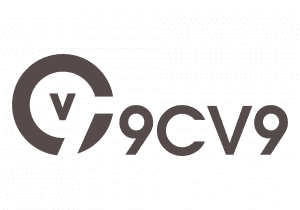









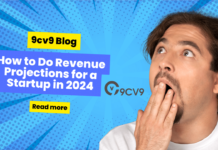
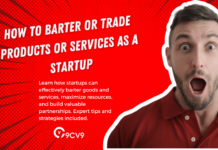


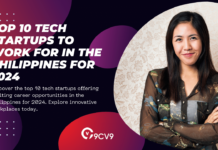
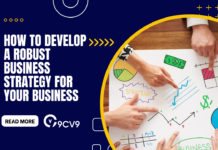

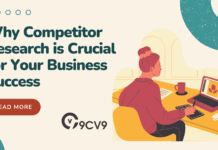
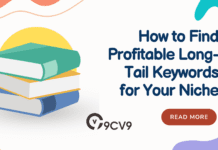



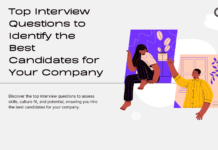
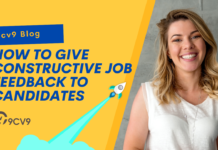
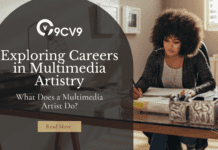
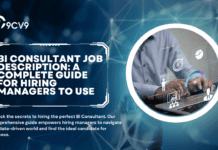





![Writing A Good CV [6 Tips To Improve Your CV] 6 Tips To Improve Your CV](https://blog.9cv9.com/wp-content/uploads/2020/06/2020-06-02-2-100x70.png)


